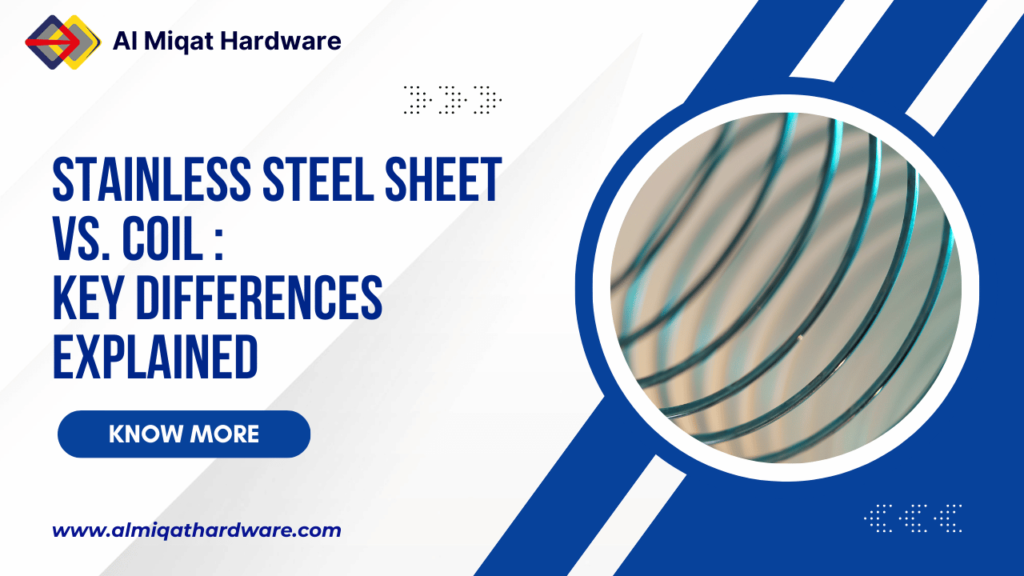In the diverse world of stainless steel products, understanding the differences between stainless steel sheets and coils is essential, especially for industries in Oman that rely on durable materials for construction, manufacturing, and agriculture. This guide will clarify the distinctions between stainless steel sheets and coils and their applications, particularly in relation to stainless steel welded mesh and other wire mesh products.
Introduction
Stainless steel is prized for its resistance to corrosion, strength, and versatility. However, not all stainless steel products are created equal. Whether you’re sourcing materials for a construction project or creating customized welded wire mesh UAE, knowing the right form of stainless steel can significantly impact your project’s success.
Definitions
- Stainless Steel Sheets: These are flat pieces of stainless steel that come in various thicknesses and dimensions. They are typically used in applications where a solid, rigid form is required, such as in architectural elements, appliance manufacturing, and other structural applications.
- Stainless Steel Coils: In contrast, stainless steel coils are rolled sheets of stainless steel that can be easily transported and processed. They are often used in industries that require large quantities of material, such as automotive, aerospace, and piping applications.
Key Differences
- Form and Thickness: Stainless steel sheets are flat and can vary in thickness from very thin (less than 1mm) to thick plates (over 6mm). Stainless steel coils are typically thinner and come in a rolled form, making them easier to handle and transport.
- Manufacturing Process: Sheets are produced by cutting flat plates from larger slabs, while coils are created through the continuous rolling of steel into a coil shape. This process allows for quicker manufacturing times, making coils more suitable for high-volume applications.
- Applications: Stainless steel sheets are commonly used in structural applications, while coils are often utilized for manufacturing purposes. In Oman, the need for stainless steel mesh in construction and agriculture emphasizes the importance of understanding these differences.
Advantages and Disadvantages
- Stainless Steel Sheets:
- Pros:
- Customization options allow for specific shapes and sizes.
- Easier to handle for smaller-scale projects.
- Cons:
- Generally more expensive on a per-unit area basis, which can impact budget considerations.
- Pros:
- Stainless Steel Coils:
- Pros:
- Cost-effective for bulk orders, reducing the overall material cost.
- Easy to transport due to their compact form.
- Cons:
- Limited customization options may not meet specific project requirements.
- Pros:
Choosing the Right Product
Selecting between stainless steel sheets and coils depends on various factors, including budget, project requirements, and intended use. For projects in Oman, sourcing from a reliable wire mesh stockiest ensures access to high-quality materials. Companies like Al Miqat Hardware provide a range of stainless steel products, including sheets and coils, catering to the local market’s needs.
Conclusion
Understanding the differences between stainless steel sheets and coils is crucial for making informed decisions in any project involving stainless steel. Whether you’re working on constructing a new building, fabricating equipment, or developing custom welded wire mesh UAE, knowing when to use sheets or coils can greatly affect your project’s outcome. For businesses in Oman, partnering with a trusted supplier ensures that you receive high-quality materials tailored to your specific needs. Explore the offerings of suppliers like Al Miqat Hardware to find the right stainless steel solutions for your projects.


